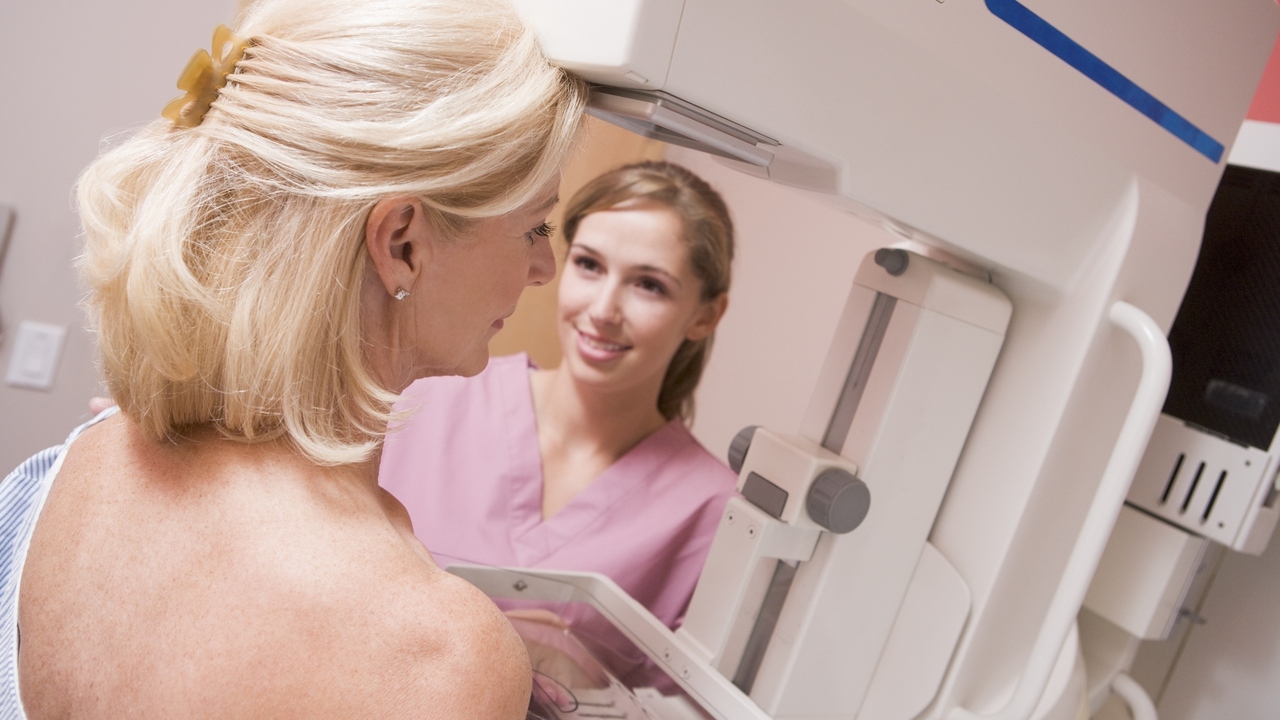 MonkeyBusiness Images/PhotoSpin
MonkeyBusiness Images/PhotoSpin
You’ve probably heard that there are new mammogram guidelines from the American Cancer Society that just came out on October 20, 2015.
The guidelines include:
- Women with an average risk of breast cancer — most women — should begin yearly mammograms at age 45.
- At age 55, women should have mammograms every other year, though women who want to keep having yearly mammograms should be able to do so.
- Regular mammograms should continue for as long as a woman is in good health and their life expectancy is an additional 10 years or more.
- Breast exams, either from a medical provider or self-exams, are no longer recommended.
Previously, their guidelines suggested that:
- Women should start getting mammograms at age 40
- Women should continue getting mammograms every year after age 55
- Medical providers should provide breast exams during a routine physical
- Women should perform self-exams starting at age 19
The new guidelines are aimed towards women at moderate risk. If you have higher risk such as testing positive for the BRCA1 or BRCA2 gene, or a family history, then follow your doctor’s advice.
In addition, the guidelines support that women can get mammograms starting earlier than age 45, or continue getting them yearly after age 55, if they so desire.
So why the change?
The American Cancer Society extensively reviewed the data from numerous studies and made recommendations based on those findings. They have determined that having more screening did not always produce findings that needed treatment, and that there can be harm from excessive mammogram screening. They are now opting for a more conservative approach.
According to the New York Times, “More than half of women screened annually for 10 years will have at least one false positive finding. These can result in as little as a second exam and as much as a biopsy, which also carries small but real risks. Fewer false positives result from biennial screens.”
Elizabeth T.H. Fontham, MPH, DrPH, member of the ACS Guideline Development Group states, “But once a woman turns 55, screening every other year preserves most of the benefit of screening every year – with fewer risks.”
Clinical breast exams also did not produce enough earlier breast cancer detection benefit. Instead, a CBE could result all too often in a false positive that could then lead to more intervention.
Do other health organizations agree?
No, they don’t, according to the New York Times. The National Comprehensive Cancer Network says that women should have mammograms every year starting at age 40.
“The American College of Obstetricians and Gynecologists recommends mammograms every year or two from 40 to 49, and every year after 50.”
The United States Preventive Services Task Force recommends screening mammography every two years and to start later, at age 50-74 years of age. The USPSTF's stand is that it is up to women to decide if they want to start earlier, at ages 40 to 50, or continue after age 75.
What should you do?
The New York Times says that all the groups agree that mammography can reduce the risk of dying from breast cancer by up to 20 percent, but there is no consensus on when to start.
1) Decide what makes you feel comfortable.
Talk with your health provider about having a mammogram between the ages of 40- 45, and decide jointly what your risk is and what your comfort level is. The same goes for deciding if you want to continue to get them every year after the age of 55.
Insurance still pays for mammograms if they are done between the ages of 40- 45. Insurance reimbursement did not change even when the USPSTF came out with their recommendations to start at age 50 in 2009.
2) If you want to continue self-exams, you can, no one is going to stop you.
If you want your doctor to continue doing them during your routine physical exams, talk to her about it. Even with the new guidelines, women are encourage to "know" their breasts and report any suspicious areas. Remember though, the likelihood of finding a mass during a breast exam is low, so do not mistake using manual exams as an alternative to mammogram screening.
3) Remember, these guidelines were created based on statistics regarding life expectancy, not quality of life issues.
CNN reports that critics of the new guidelines state that the ACS only looked at whether screening saved a woman’s life, not whether screening earlier prevented women from needing to have a mastectomy or chemotherapy.
Do what is right for you. And if later you decide to change your mind, that’s OK too.
Sources:
New Mammogram Recommendations: A Guide. New York Times.com. Retrieved Oct. 25, 2015.
http://www.nytimes.com/2015/10/21/health/american-cancer-society-mammogr...
New breast cancer guidelines: screen later, less often. CNN.com. Retrieved Oct. 25, 2015.
http://www.cnn.com/2015/10/20/health/new-acs-breast-cancer-screening-gui...
Why New Guidelines Probably Won’t Mean Fewer Mammograms. New York Times.com. Retrieved Oct. 25, 2015.
http://www.nytimes.com/2015/10/22/upshot/new-screening-guidelines-wont-a...
In major shift, new guidelines scale back breast cancer screenings for younger women. Washington Post.com. Retrieved Oct. 25, 2015.
https://www.washingtonpost.com/news/to-your-health/wp/2015/10/20/new-bre...
Oeffinger, MD., Kevin C. et. Al. Breast Cancer Screening for Women at Average Risk. 2015 Guideline Update From the American Cancer Society. JAMA. 2015;314(15):1599-1614. doi:10.1001/jama.2015.12783.
http://jama.jamanetwork.com/article.aspx?articleid=2463262
Michele is an R.N. freelance writer with a special interest in woman’s healthcare and quality of care issues.
Edited by Jody Smith





Add a Comment2 Comments
Yep, I agree with Linda.
October 30, 2015 - 2:57pmI was lucky to find my lump, early, with self examination.
I would encourage self examination, pluss mammograms.Have a mamogram annually, at least from age 40, earlier, if there is family history.
Also, mammograms can hurt, let's face it...I find taking pain killers half an hour beforehand helps.
Also, do your best to be supportive for people going through treatment for cancer.
That means, no free advice, just cuppas, maybe offering lifts to tests and treatment, being good company.It can be very lonely, so many people run...maybe they think cancer is infectious?
This Comment
So the new guidelines are based on a lot of false positives. Regardless, I would rather have a biopsy and testing with the result of a false positive vs. not knowing and having something linger. In my humble opinion, it feels like we are going backwards in testing. As far as I am concerned, test away. A problem caught in the early stages is much easier to treat and the outcome to cure is far greater. Just my opinion.
October 29, 2015 - 4:20pmThis Comment